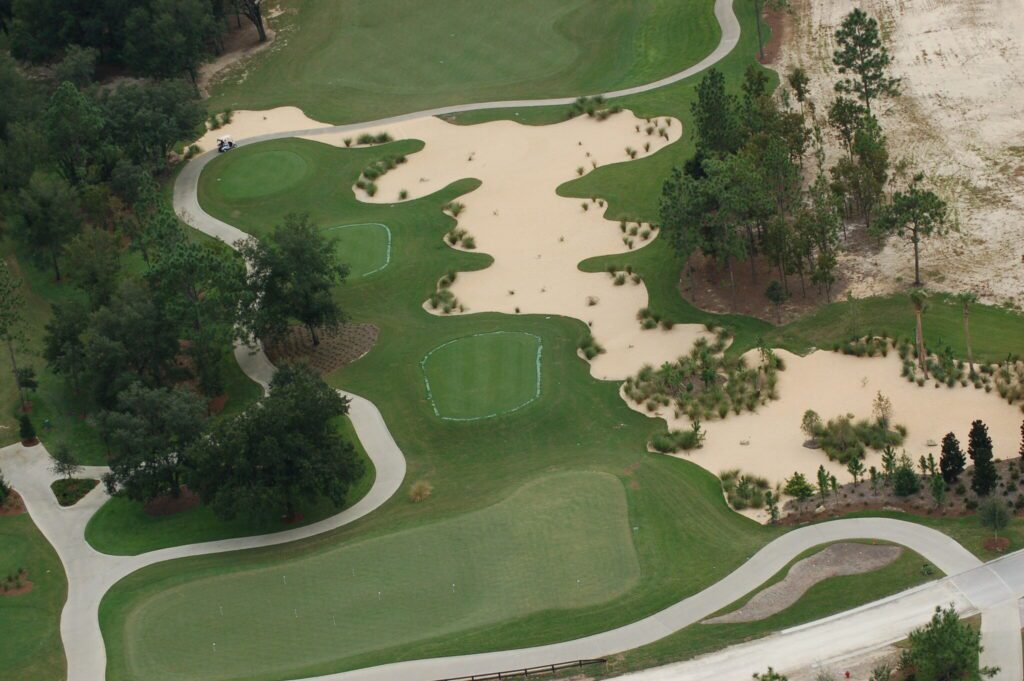
Golf course superintendents have a lot on their plate, but one of the most complicated aspects of course maintenance is pest control. Weeds, insects, fungus, and diseases all qualify as pests, and each poses a unique and costly threat to the course. If left unchecked, damage from pests can be devastating enough that complete turf reinstallations are necessary. Whether you’re confronting a threat or looking to take preventative measures, you’ll need to have a plan before touching your turf.
Course, Climate, and Pest Control

Depending on your climate, region, and turfgrass species, your course will be vulnerable to different pests. Consistently hot climates, like that of Florida or the Carolinas, support large populations of insects that are active year-round. Chinch bugs and armyworms thrive in humid conditions, laying eggs and multiplying in your turf. And while courses in colder climates may face less creepy crawlers, they still have their hands full with seasonal weeds and disease.
Golf courses in dry and cool climates struggle with complications from limited rainfall. Rapid Blight is a disease that makes it difficult for turfgrass roots to filter out salts. This uptick in salinity can cause damage and necrosis in your turf, causing large dead or empty patches on your course. When maintaining a golf course in a cooler climate, make sure to be prepared to prevent and face Rapid Blight.
For golf courses in wet hot climates like Florida, Armyworms are a major concern. Lush turf attracts adult Armyworms who lay their eggs in blades of grass. When the larvae hatch they consume all the organic material within range, which means major damage to your turf. Using proper IPM is one of the most effective ways to prevent Armyworm damage, but if your course is infested, you will need to hire a licensed pest control technician.
Having a Pest Control Plan
It is always better to play offense than defense when it comes to agronomy. While pesticide application is widespread and can be necessary in some cases, strategies like Integrated Pest Management limit chemical application.
Integrated Pest Management uses a multidisciplinary approach to pest control and disease prevention and does so with little to no environmental impact. Addressing Cultural, Biological, Physical, and Chemical practices and how they interact is what puts the integrated in Integrated Pest Control.
Making Cultural changes on the golf course could be as easy as changing up your maintenance routine. Small habits and misplaced priorities can add up when overseeded areas grow weeds and under irrigated turf hosts beetles.
Biological control is all about using the food chain to your advantage. Introducing or maintaining your pest’s natural predators is an environmentally friendly way to keep pest populations low.
Physical factors encompass site and climate but also includes actual tools. Physical tools like barriers or steam sterilization make a big difference when used in junction with the other IPM practices.
And if necessary, Chemical controls involve the application of pesticides in controlled amounts and by a licensed pest control technician. While IPM prioritizes the environment, chemical applications can assist in preventing widespread damage.
Pest control is an essential part of good golf course maintenance, and Integrated Pest Management makes the process more effective and more sustainable. When dealing with the health of your turf, always take things seriously and be willing to ask for help when you need it. DTE Golf’s Course Maintenance Solutions are crafted to fit your course, your budget, and your goals. With a staff of licensed and award-winning professionals, a range of resources, and industry-leading technology, DTE Golf® is always the solution.
